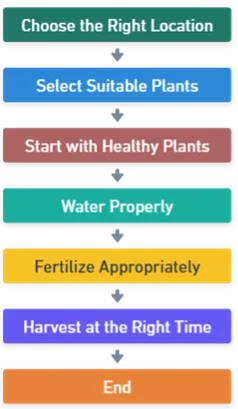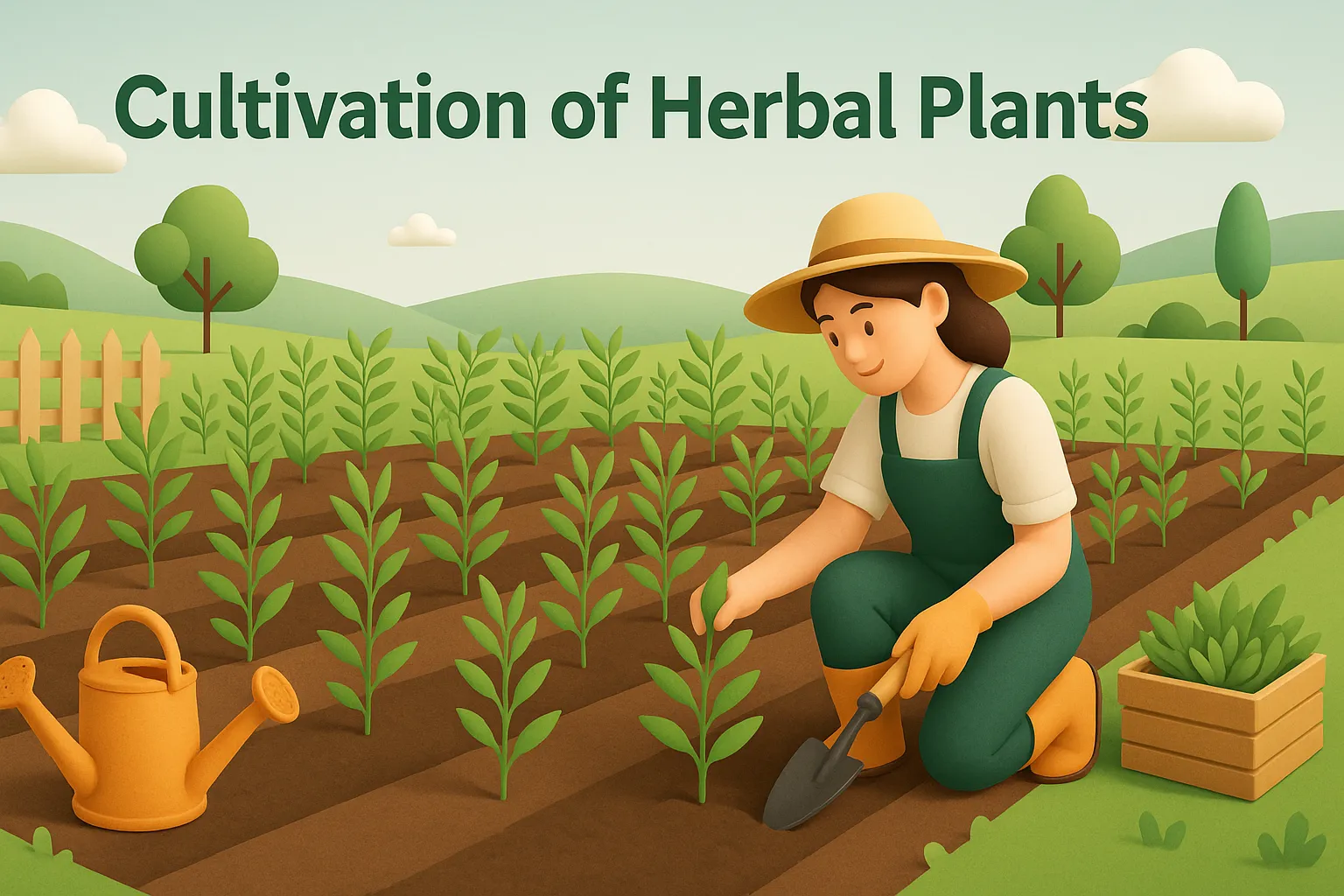Cultivation of herbal plants involves soil selection, propagation, irrigation, and harvesting practices to ensure quality medicinal herbs.
Cultivation of herbal plants
- Cultivating herbal plants can be rewarding, whether for personal use or commercial purposes.
- Proper cultivation ensures healthy plant growth, potency, and sustainability.
Key Steps for Herbal Cultivation:

-
Choose the Right Location:
- Most herbs prefer well-drained soil and full sun (at least six hours of sunlight daily).
- Amend heavy clay soil with organic matter like compost or vermicompost for better drainage.
-
Select Suitable Plants:
- Choose herbs that match your climate and soil conditions.
- Consider factors such as soil pH, moisture levels, and sunlight availability.
-
Start with Healthy Plants:
- Buy pest- and disease-free plants from nurseries.
- Use high-quality seeds and follow proper germination instructions when growing from seed.
-
Water Properly:
- Most herbs prefer moderate watering—avoid overwatering or underwatering.
- Water only when the top inch of soil feels dry.
-
Fertilize Appropriately:
- Herbs generally require minimal fertilization.
- Use compost or a balanced organic fertilizer once or twice a year.
- Regularly pinch back tips to encourage branching and bushy growth.
-
Harvest at the Right Time:
- Harvest in the morning (after dew dries but before intense sunlight) for maximum flavor and potency.
- Use sharp, clean scissors to cut stems and leaves, leaving enough foliage for regrowth.

